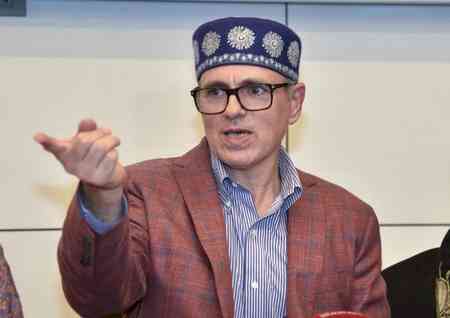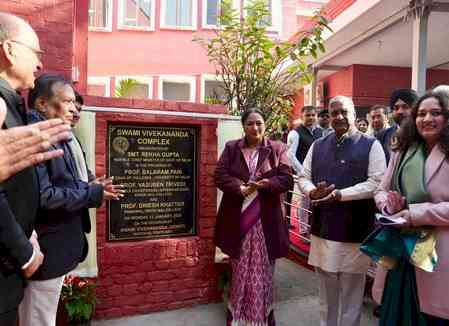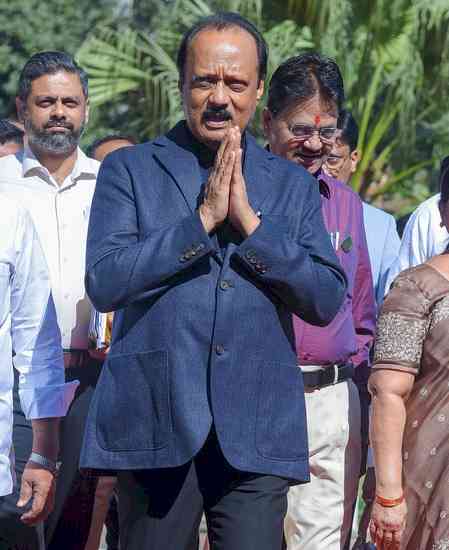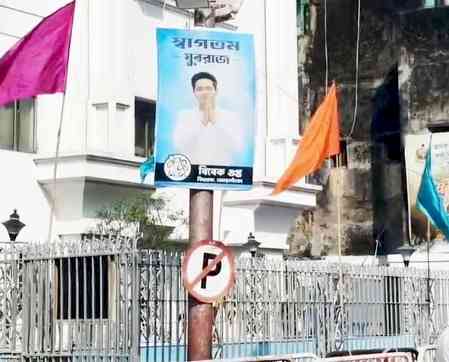Microbiology Department of PU develops an Indigenous Low-Cost Consolidated Bioprocessing Technology
Microbiology Department of Panjab University, Chandigarh develops an Indigenous Low-Cost Consolidated Bioprocessing Technology to Transform the Biodegradable Municipal Solid Waste into Biofertilizer Formulations for sustainable organic farming.
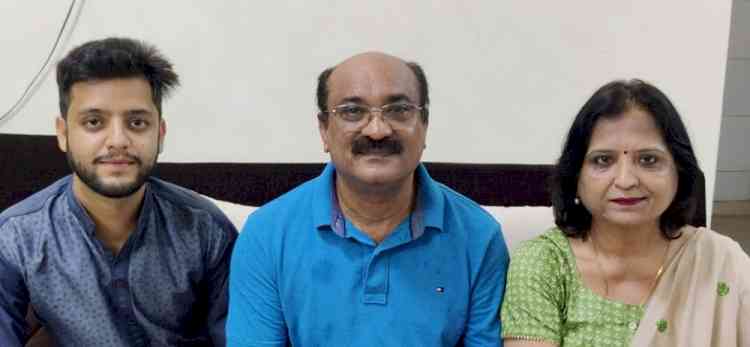
Chandigarh, March 10, 2023: Microbiology Department of Panjab University, Chandigarh develops an Indigenous Low-Cost Consolidated Bioprocessing Technology to Transform the Biodegradable Municipal Solid Waste into Biofertilizer Formulations for sustainable organic farming.
The expanding population is putting tremendous pressure on cultivable lands around the world. To meet such challenges, a continuous expansion of the food-producing ecosystem is required. In this context, chemical fertilizers have to provide nutrients to support plant growth and boost up crop productivity. But the excessive and uneven use of these chemical fertilizers resulted in negative effects on the health of agricultural soils leading to both lower production yield and lower efficiency of fertilizers.
An over-reliance on chemical fertilisers would undoubtedly have a negative impact on human health and the environment. Biofertilizers are biological preparations of efficient microorganisms that improve nutrient acquisition and thus promote plant growth. By fixing atmospheric nitrogen, saturating soil with phosphorus, and promoting plant development, they raise soil productivity. The microorganisms included in the biofertilizer formulation also exhibit notable tolerance for chemical fertilisers, which are widely used to boost production but also serve to slow insect growth in the field and are hazardous to the ecosystem, leading to their bioaccumulation.
Developing countries like India are dealing with two major issues at the same time, one is to fulfil the food requirement of expanding population, and the other is the safe disposal of biodegradable solid waste. Outrageous waste-stream generation gleaned from various sectors of the current linear economic model make up one of the major societal challenges to be confronted regarding the management and disposal of Municipal Solid Waste. Municipal Solid waste includes five different groups of waste: biodegradable wastes, hazardous wastes, recyclable wastes, inert wastes, and composite wastes. The organic fraction of municipal solid waste accounts approximately for 46% weight of the total municipal waste streams with large content of food waste, kitchen waste, and leftovers from residences, restaurants, and markets.
Booming consciousness of the problems associated with municipal solid waste, research on the conversion of biodegradable vegetable and kitchen waste into value-added products has received growing deliberations. Keeping this into consideration, Dr. S.K. Soni, Professor in the Department of Microbiology, Panjab University, Chandigarh, and his research group comprising Dr. Raman Soni, Associate Professor, Department of Biotechnology, D.A.V. Collage, Sector-10, Chandigarh and Mr. Apurav Sharma, Research Scholar in the Department of Microbiology, Panjab University, Chandigarh has developed an industrially viable and scientifically sound process for the management of biodegradable fruit and vegetable waste by transformation into biofertilizer formulations. The process involves the rapid and efficient consolidated bioprocessing for the disintegration of various polymeric organic compounds in the biodegradable municipal solid waste for the release of simple sugars and amino acids to support the growth of the various microbial strains capable of atmospheric N-fixation, mobilizing P and K besides producing plant growth promoting hormones. This yielded a liquid supernatant and a solid residue with both containing the novel biofertilizer organism having all the above-cited traits thus yielding the stable liquid biofertilizer and carrier-based solid biofertilizer formulations. Consolidated bioprocessing (CBP) is a system in which enzyme production, substrate hydrolysis, and fermentation are accomplished in a single step process by a consortium of microorganisms. Consolidated bioprocessing is a less energy-intensive method and a potential low-cost route for the preparation of biofertilizers, because of the avoided cost of exogenous enzymes required for biodegradable vegetable and kitchen waste hydrolysis. Consolidated bioprocessing also has the added benefit of requiring minimal pre-treatment of biodegradable vegetable and kitchen waste residues, because pre-treated feedstocks for the process do not need to be completely saccharified with costly, huge volumes of exogenous enzymes, thus the cost of pre-treatments, which is a key bottleneck in lowering the net cost of hydrolysis of biodegradable vegetable and kitchen waste for the biofertilizer preparation is kept very low. The process, when used at an industrial scale, will not only reduce the burden of the cost of nutrients for the preparation of different types of biofertilizer formulations but will also provide a scientific solution for the management of biodegradable municipal solid waste residues in addition to reducing the dependency on synthetic chemical fertilizers.
In the method, a natural variant of a fungal strain capable of producing multiple hydrolytic enzymes including cellulases, hemicellulases, amylases, pectinases, inulinases, and proteases is inoculated in thermally treated crushed biodegradable municipal solid waste and dispensed water. In addition, some bacterial strains having plant growth-promoting traits including N-fixation, P and K mobilization in addition to the production of plant growth-promoting traits including Indole Acetic Acid production, Hydrogen Cyanide production, Siderophore production, and ammonia production are also simultaneously inoculated in the thermally treated biodegradable municipal solid waste. The inoculated, thermally treated biodegradable municipal waste was incubated for 4 to 5 days. No exogenous enzymes are used in the process. The contents are then filtered leading to the generation of a liquid component and a solid residue both containing a high count of biofertilizer organisms thus leading to the production of liquid and carrier-based biofertilizer formulations. Both the solid residue and liquid filtrate contain a large population of biofertilizer microorganisms as well as spores and hyphae of the fungal strain, filterable, undigested organic compounds and soluble compounds of nitrogen, phosphorus and potassium. One ton of biodegradable municipal solid waste can produce 3,500 -4,000 l of liquid biofertilizer and 50-75 kg of carrier-based biofertilizer by the process.
The liquid filtrate is a very effective seed inoculant as the seeds can be coated with the sticky material present in the form of sugars, oils, gums and resins present in the liquid and will protect the microbial inoculant and the seed from drying when stored for long periods of time. The solid residue, because of its granular and porous nature, is a very effective carrier for the inoculant microbial strains and can be used as a soil inoculant to be placed in the furrows in the soil and allows survival of the microbial inoculants when stored for long periods.
The Biofertilizer formulations from this process are not only the source of a microbial strain having the ability to produce plant growth-promoting traits, but also the rich source of various nutrients including ammoniacal nitrogen, nitrate nitrogen, phosphorus, and potassium. The residual sugars in the formulations increase the shelf life of the biofertilizer organisms which eliminates the step of further addition of carbon sources to increase the shelf life. No exogenous source of carbon is added to increase the shelf life of the solid biofertilizer formulation. The biofertilizer formulations thus produced are highly effective in increasing plants’ growth and health in terms of improved root length, shoot length, biomass, and the number of buds, flowers, and fruits as well as in nourishing the soil with nutrients and growth factors. An Indian patent has also been filed for this process, in accordance with the provisions of the Patent Act, 1970.
The city beautiful, Chandigarh and major two cities in the vicinity Mohali and Panchkula produce a humungous amount of biodegradable solid waste which is either dumped in the open or burning incidents in the dumping sites most common of which is Dadu Majra Dumping site, Chandigarh. The biodegradable solid waste production in the whole of Tricity is 333 TPD of which Chandigarh itself produces 200 TPD, Mohali produces 70 TPD and Panchkula produces 63 TPD. The lack of awareness among citizens and the lack of proper technology among administrating bodies leads to problems associated with waste generation. The present process technology thus provides an innovative and scientific method of biodegradable solid waste management with simultaneous production of different biofertilizer formulations with improved shelf life. The innovative study offers a shorter manageable, sustainable, and economically feasible solution for biodegradable solid waste management adhering basic principle of circular economy and organic farming.
The use of this indigenous process can be extended at community and municipality levels for efficient, controlled, and rapid transformation of food waste residues into value-added products in the form of biofertilizer formulations and will encourage organic farming. Substituting synthetic chemical fertilizer with biofertilizer procured from biodegradable vegetable and kitchen waste would axe the requirement for synthetic chemical fertilizers which not only reduce the environmental impact of municipal solid waste and directly benefit agronomy.


 City Air News
City Air News 
